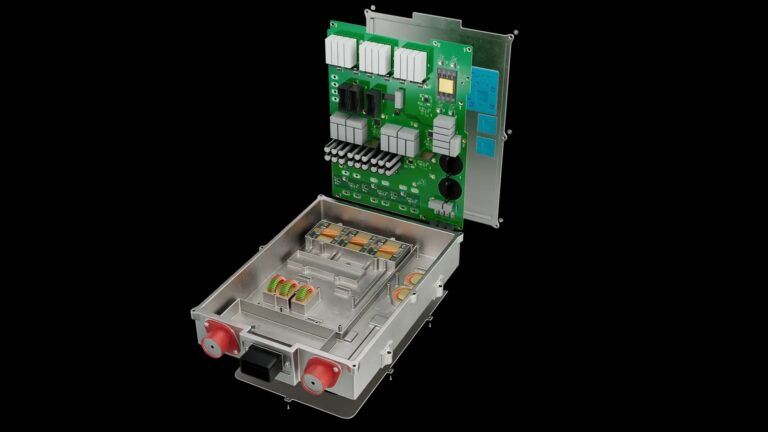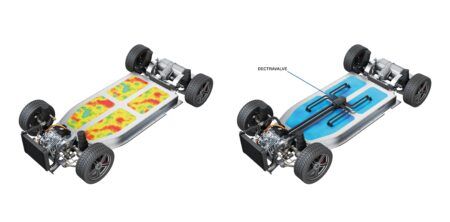EV manufacturers are increasingly packing multiple powertrain components into single, compact units to save space and weight. This trend, known as ‘x-in-1 integration’, combines elements such as e-motors, inverters, on-board chargers and DC-DC converters. Whilst the approach improves efficiency, it creates significant thermal management challenges as heat builds up in tightly confined spaces.
Henkel has introduced two new silicone potting compounds to address these issues. Loctite SI 5643 and Loctite SI 5637 are designed specifically for power conversion components in electric vehicles, particularly on-board chargers and inverters where heat dissipation is critical.
The materials are two-component, fast-curing compounds with low viscosity, allowing them to flow easily into small gaps around sensitive electronics. Their self-levelling properties ensure thorough coverage whilst their thermal conductivity facilitates heat transfer away from components. The products differ in their thermal conductivity levels, giving engineers options for various design requirements.
A key feature is their low Shore hardness and flexibility. This protects components from vibration damage without creating mechanical stress when temperatures fluctuate – a common occurrence in EV operation.
“The launch of Loctite SI 5643 and Loctite SI 5637 further strengthens our pioneering role in creating e-mobility solutions developed in close partnership with OEMs, battery manufacturers and automotive suppliers to meet emerging challenges in areas such as thermal management,” said Matthias Brachmann, Business Development Manager for E-Mobility Power Conversion and E-Drive Systems at Henkel.
The company has established Battery Engineering Centres and built partnerships with dispensing equipment manufacturers to support its e-mobility portfolio. Tobias Knecht, Global Head of Market Strategy for E-Mobility at Henkel, highlighted the speed at which the products moved from laboratory development to production readiness, describing it as evidence of the company’s commitment to the sector.
The launch reflects broader industry pressure on automotive suppliers to deliver components that are simultaneously more compact, more powerful and more reliable – a combination that makes effective thermal management increasingly important.





